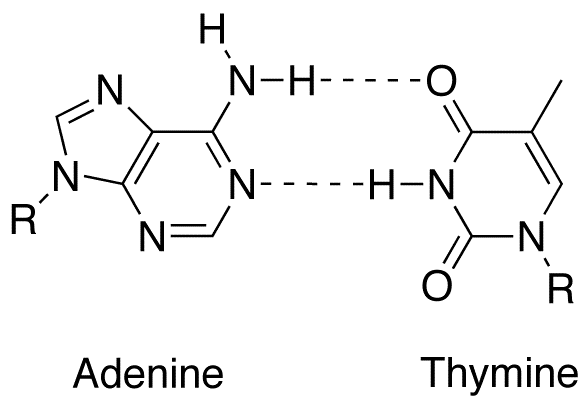There are three types of mutation.
- Base substitutions
- Frameshift mutations
- Spontaneous mutations
BASE SUBSTITUTIONS
There are three types of base substitutions :
(a) Missense mutations
Happens there is changes in the first base or second base.
Hence, lead to changes in the amino acid than the supposed amino acid.
The protein formed could be inactive or reduced in activity when this happens.
 |
| Glutamic acid (Glu) was the original amino acid but is substituted with Valine (Val) instead. |
(b) Silent mutations
Happens when there is changes in the third base.
It does not shows any obvious effect because the amino acid formed is the same as the original amino acid.
 |
| The third base is changed (from "T" to "C") but the amino acid formed is the same which is tyrosine. |
(c) Nonsense Mutations
Happens when the codon to form amino acid is changed to a stop codon.
#Stop codon : UAG, UAA, UGA
Stop codon is a nucleotide triplet within a mRNA that signals termination of translation. The release factor will read the triplet --> polypeptide synthesis end.
#A release factor is a protein that will recognize the stop codon in an mRNA sequence and allows the termination of translation.
The protein formed is incomplete, truncated and also can be nonfunctional protein but depending on "degree of shortening".
 |
| The protein formed is incomplete. |
FRAMESHIFT MUTATIONS
Happens when there is INSERTION or DELETION of base that will shift the reading frame of the genetic message.
Protein formed will be different from the original.
Usually, protein synthesis will ends after the mutation.
 |
| Frameshift that results in different protein formed when "C" is inserted. |
 |
| Deletion of the base "C" changes UAC to UAG which is the stop codon. Protein synthesis ends. |
SPONTANEOUS MUTATIONS
No mutations involved.
Happens when errors occur during replication that will lead to spontaneous alteration of a base.
TYPES OF MUTAGENS
There are four types of mutagens :
- Base analogues
- Chemical mutagen
- Radiation
- Intercalating agents
BASE ANALOGUES
Compounds that look very similar to one of the four base (A,T,G,C)
The mismatch of bases can cause mutations.
For example :
5-Bromouracil (5Bu) structure is similar to thymine (T)
As you can see, A-5Bu base pairs does not cause mutation because it's structure is the same as A-T base pairs.
However, when 5Bu can also pair with guanine. (When 5Bu change into enol form)
Hence, causing AT to GC substitution.
CHEMICAL MUTAGEN
Substances that can alter a base that is already incorporated in DNA by changing it's hydrogen bonding specificity.
Nitrous acid act as mutagen where it alters adenine, A in which it pairs with C instead of T.
RADIATION
There are two types of radiation :
- Ionizing : High penetrating power, can kill cell if used in higher dose.
- Nonionizing : Kill about 90-95%. The remaining 5-10% are mutants.
Mutations occurs when repairing the damaged DNA due to the radiations.
DNA damage induced DNA repair system.
SOS regulatory system initiates DNA repair processes.
| Damaged DNA due to UV. |
| DNA repair processes. |
INTERCALATING AGENT
Planar, 3-ringed molecules.
Chemicals that are flat and look like bases where it can be inserted into bases. Pushing apart the original bases.
Results in frameshift due to insertion or deletion of base pairs.
For example,
 |
| Acridine - intercalating agent |
 |
| Deletion and insertion of bases. |
Lastly!!
We can also identify mutants!!
There are selectable mutants and nonselectable mutants.
Selectable mutants are drug resistance. Meaning the mutants are antibiotic-resistant and can grow in the presence of antibiotic.
#Antibiotic can kill the parent cell but not the mutated daughter cell.
Selectable mutants can be detected by two ways :
- Positive selection
- Negative selection
POSITIVE SELECTION
Rejecting unwanted parent cells.
 |
| Colonies in the medium with penicillin is mutants. |
NEGATIVE SELECTION
Replica plating technique.
Select cells that are unable to carry out certain functions.
For example from the picture below, it will select cells that cannot synthesise trypotophan. Since the mutant is dependant to trytophan, when trytophan is not present it cannot grow.
#Auxotroph is a mutant that have nutritional requirement that is absent in the parent cells.
P/S I realised something. My suitable/best way of studying this is by looking at the pictures. I understand better when.... hmmm observing the picture... for an amount of time haha trying to see what's the difference of before and after reactions/understanding the mechanism, sort of. It suits me though. So it is true I'm a visual type learners. x'D







No comments:
Post a Comment